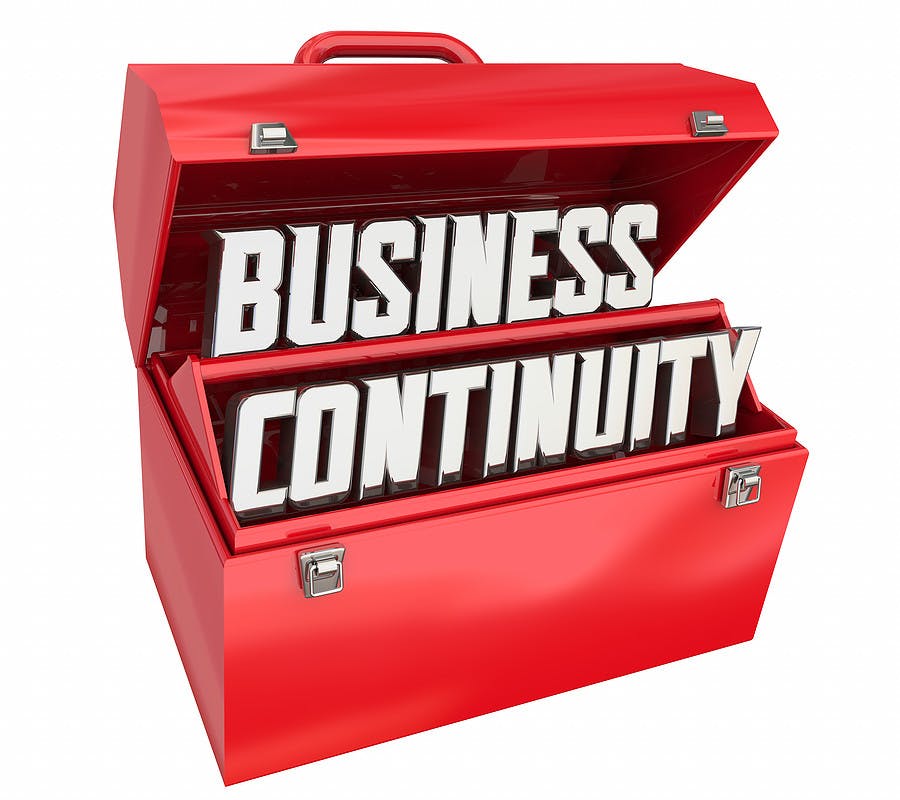At the beginning of 2020, few companies had a pre-established pandemic plan in place. It was a crisis that almost no one saw coming, and one that many organizations are still trying to understand as they weather the continued impact of the situation.
Of course, the adage says that hindsight is 20/20, and for those who entered this year without a plan, it’s likely that they will leave with a firm one in place — one that will account for the lessons learned from COVID-19, emphasizing the importance of crisis response and disaster recovery.
Here are three steps that you can take to safeguard your business today and prepare for any future challenges that lie ahead.
1. No Such Thing As Too Much Planning
There are many ways to go about approaching crisis response and planning, but most importantly, you first need to process the current crisis and the impact it is having on your business. Part of the reason COVID-19 blindsided businesses across verticals is that the circumstances were unprecedented and unexpected. Many workplaces scrambled to go virtual overnight, regardless of whether the infrastructure was in place. As a result, they had to make last-minute technology, staffing, and business changes.
Moving forward, it’s important to start outlining exactly what happened during COVID-19 and the impact it had on your business, as well as your company’s culture at large. Adding context from across the industry, whether with examples of other companies’ responses or research about the vulnerability of jobs will be key. Certain service industries, for instance — from retail to fitness to personal grooming — will have very different crisis plans than those with jobs that can continue operating remotely.
For example, while some companies have had to downsize their workforce and refocus their business priorities, others have shifted gears to meet the new consumer demands introduced by this pandemic. Case in point: Walmart hired 150,000+ new employees over the past few months, many of which came from restaurant and hospitality industries that had to make unprecedented furloughs. On average, the retail giant hired 5,000 people a day using an expedited hiring process rolled out in March. What’s more, it made hiring decisions in hours in a process that would otherwise take days and weeks.
2. Leading by Example
In processing this most recent crisis, think about “wider applicability,” which in the business-continuity industry is referred to as “all-hazards planning.” On the one side is emergency management, which is what happens in the event of a bomb threat, fire, or natural disaster. There’s a focus on training simulations and checklists that will help in the moment.
On the other is business operations. Companies must put the emphasis on this second prong by fostering strong departmental leadership. That way, when a crisis strikes, there is a clear chain of command. Understanding who is in charge helps organizations to remain nimble and choose an appropriate course of action.
Your leaders will be the ones who communicate with employees. They will be the ones providing guidance, launching new programs and policies, and making tough decisions. Like crises, leaders will change, but building a plan around the idea of leadership will cement their role in the response and make it possible to assess and develop the skills needed to manage, no matter the scenario.
Taking time to reflect on successes and learn from challenges is more critical than ever during times of uncertainty. By spending a few minutes to assess enduring skills as a leader, and then creating an action plan, leaders can push themselves to be the most effective they can be.
Look no further than the remote work decisions being made from leaders like Facebook’s Mark Zuckerberg or Twitter’s Jack Dorsey. They highlight the importance that employee-first decisions and transparent communications can have on a company’s culture, especially during a time of crisis.
3. Embracing New Ways of Work
Approximately 60% of Americans reported that they would prefer to work remotely as much as possible, even after restrictions are lifted. But what will it take to ensure productivity and performance stays intact remotely? What about in-office benefits like gym membership or free lunches? What can you do to support the physical wellbeing of your workers? All of these considerations tie into your ability to respond to a crisis, both immediately and as the world recovers and reopens.
While the pandemic seems far from over, there are a few takeaways that have already emerged:
- Plan for business continuity, even if there’s only so much that you know right now
- Work through the initial fallout to help find and reinforce any weak spots that require attention
- Create a framework that both scaffolds your organization and elevates the role of leaders in times of need.
- Nurture resilience through leadership positions before, during, and after a crisis
- Stay agile and open to change, recognizing what you need and why, and then shift to meet these needs sooner rather than later
It’s tough to say what the workforce and workplace will look like post-COVID-19, though many have speculated. Perhaps the best perspective comes from the World Economic Forum: “Tomorrow is certain to be very different — which is why we must start reframing the future today.”
So, rather than spend time on the “what ifs,” embrace the shifts that the pandemic introduced and focus on what you can manage. Strategies employed before the crisis aren’t likely to hold up after, making this the time to adapt.
